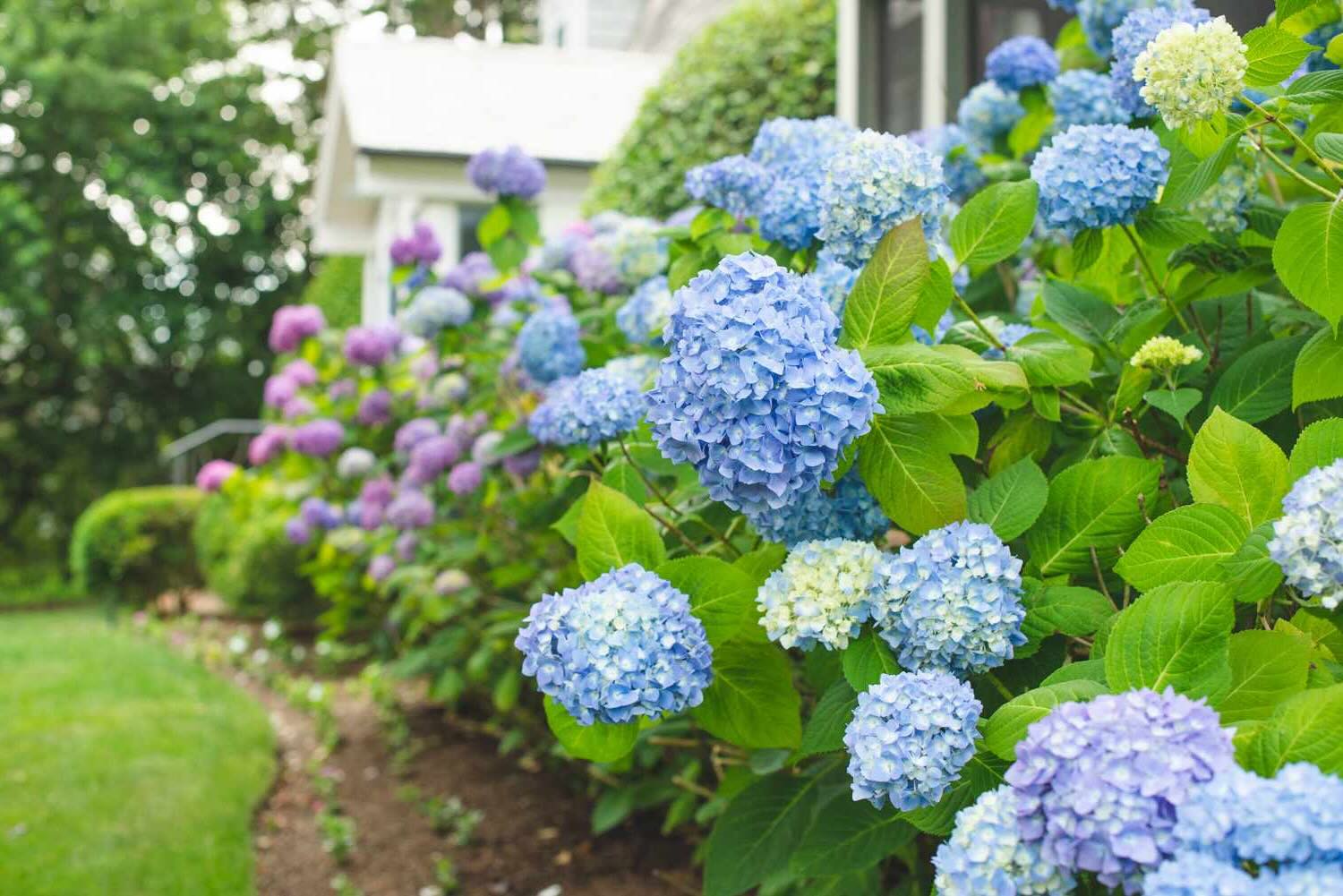
Hydrangeas are more than just pretty flowers. These vibrant blooms have a rich history and some surprising characteristics. Did you know that hydrangeas can change color based on soil pH? Yes, the soil's acidity or alkalinity can turn them blue, pink, or even purple. Originating from Asia and the Americas, these plants have been cultivated for centuries. They symbolize heartfelt emotions, making them popular in gardens and bouquets. With over 70 species, hydrangeas offer a variety of shapes and sizes, from the classic mophead to the delicate lacecap. Whether you're a gardening newbie or a seasoned pro, hydrangeas are sure to add a splash of color and intrigue to your outdoor space. Ready to learn more? Let's dive into 27 fascinating facts about these captivating flowers!
The Beauty of Hydrangeas
Hydrangeas are one of the most beloved garden plants, known for their large, colorful blooms. These flowers can transform any garden into a vibrant paradise. Let's dive into some fascinating facts about these stunning plants.
-
Hydrangeas come in a variety of colors, including blue, pink, white, and purple. The color can change based on the soil's pH level.
-
The name "hydrangea" comes from Greek words "hydor" meaning water and "angos" meaning jar or vessel, referring to the plant's need for plenty of water.
-
There are over 75 species of hydrangeas, each with unique characteristics and growing requirements.
Hydrangea Care and Maintenance
Taking care of hydrangeas can be rewarding. Proper care ensures they thrive and produce beautiful blooms year after year.
-
Hydrangeas prefer morning sun and afternoon shade. Too much direct sunlight can cause the leaves to scorch.
-
These plants need well-drained soil. Overwatering can lead to root rot, which can be fatal for hydrangeas.
-
Pruning hydrangeas at the right time is crucial. Some species bloom on old wood, while others bloom on new wood.
Unique Characteristics of Hydrangeas
Hydrangeas have some unique traits that make them stand out among other garden plants.
-
The size of hydrangea blooms can vary greatly, with some species producing flowers as large as a basketball.
-
Hydrangeas can be used as natural indicators of soil pH. Blue flowers indicate acidic soil, while pink flowers indicate alkaline soil.
-
Some hydrangea species have fragrant flowers, adding an extra sensory delight to your garden.
Hydrangeas Around the World
Hydrangeas are popular worldwide, each region having its own favorite species and varieties.
-
In Japan, hydrangeas are known as "ajisai" and are celebrated during the rainy season with festivals and garden tours.
-
The French hydrangea, or Hydrangea macrophylla, is a favorite in European gardens for its large, colorful blooms.
-
In the United States, the oakleaf hydrangea (Hydrangea quercifolia) is native to the southeastern region and is known for its unique leaf shape.
Hydrangeas in Culture and Symbolism
Hydrangeas hold significant cultural and symbolic meanings in various parts of the world.
-
In Victorian times, hydrangeas symbolized boastfulness or vanity due to their large, showy blooms.
-
In Japan, hydrangeas are associated with heartfelt emotion and gratitude, often given as gifts to express these feelings.
-
Hydrangeas are the official flower of the fourth wedding anniversary, symbolizing enduring grace and beauty.
Fun Facts About Hydrangeas
Here are some fun and quirky facts about hydrangeas that you might not know.
-
Hydrangeas can live for decades with proper care, making them a long-term addition to any garden.
-
The largest hydrangea bloom on record measured over 12 inches in diameter.
-
Some hydrangea species can change color multiple times throughout the growing season.
Hydrangeas in Art and Literature
Hydrangeas have inspired artists and writers for centuries, appearing in various forms of art and literature.
-
Claude Monet, the famous French painter, often included hydrangeas in his garden scenes.
-
Hydrangeas are frequently mentioned in Japanese haiku poetry, symbolizing the fleeting beauty of nature.
-
In Western literature, hydrangeas often symbolize abundance and prosperity due to their lush, full blooms.
Growing Hydrangeas from Cuttings
Propagating hydrangeas from cuttings is a popular method for gardeners to expand their collection.
-
The best time to take hydrangea cuttings is in late spring or early summer when the plant is actively growing.
-
Rooting hormone can help increase the success rate of hydrangea cuttings by encouraging root development.
-
It typically takes about 2-3 weeks for hydrangea cuttings to develop roots and be ready for planting.
Hydrangeas and Wildlife
Hydrangeas can attract various forms of wildlife to your garden, adding to the ecosystem's diversity.
-
Bees and butterflies are often drawn to hydrangea flowers, helping with pollination.
-
Some bird species use hydrangea bushes for nesting due to their dense foliage.
-
Hydrangeas are generally deer-resistant, making them a good choice for gardens in areas with high deer populations.
The Final Bloom
Hydrangeas are more than just pretty flowers. They’ve got a rich history, unique growing habits, and even some surprising uses. From their ability to change color based on soil pH to their origins in Asia and the Americas, these plants are full of fascinating details. They can thrive in various climates, making them a favorite for gardeners worldwide. Plus, their blooms can last for months, adding long-lasting beauty to any garden.
Whether you’re a seasoned gardener or just starting out, hydrangeas offer something special. They’re not just eye-catching; they’re also a testament to nature’s adaptability and beauty. So next time you see a hydrangea, remember there’s more to it than meets the eye. Happy gardening!
Was this page helpful?
Our commitment to delivering trustworthy and engaging content is at the heart of what we do. Each fact on our site is contributed by real users like you, bringing a wealth of diverse insights and information. To ensure the highest standards of accuracy and reliability, our dedicated editors meticulously review each submission. This process guarantees that the facts we share are not only fascinating but also credible. Trust in our commitment to quality and authenticity as you explore and learn with us.
